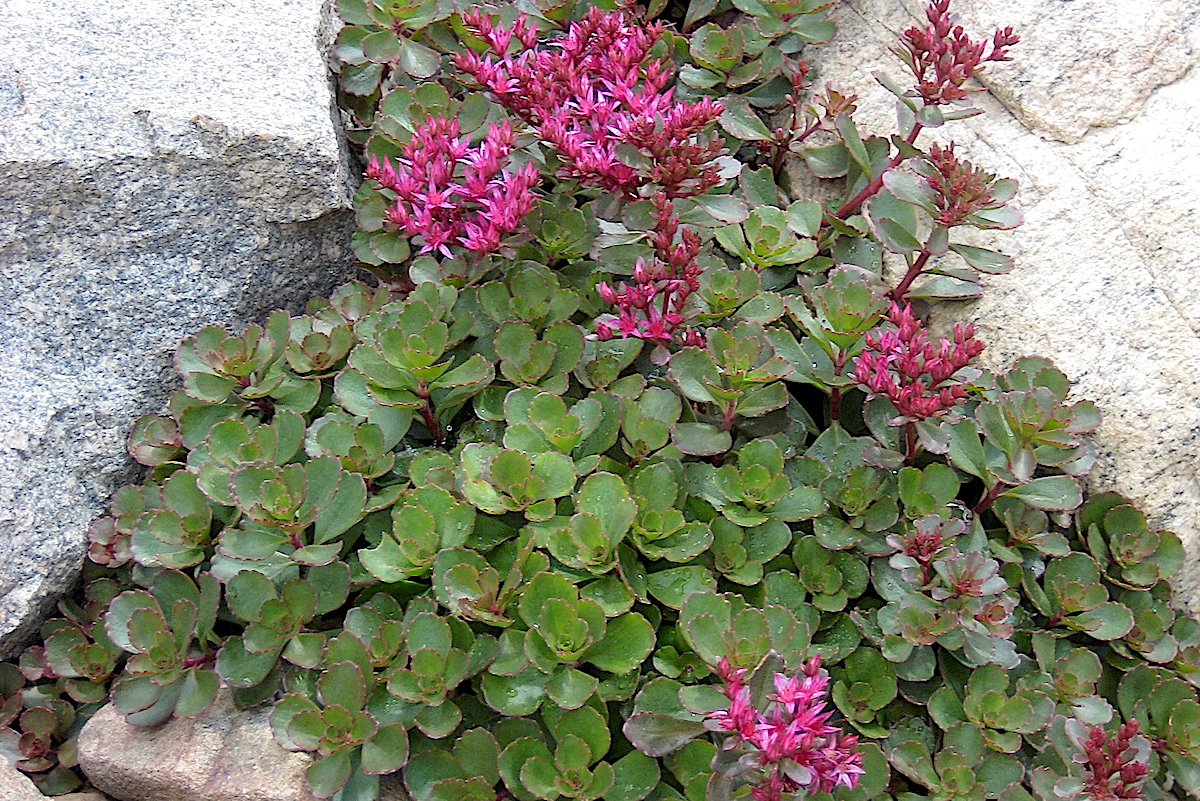
Designing with Cold-Climate Succulents
Above: Oregon designer Becky Sell of Sedum Chicks explains how to select, care for and beautifully display stonecrops, hens-and-chicks and other cold-climate succulents. Filmed at Becky's award-winning booth at the Northwest Flower & Garden Show in Seattle.
Becky Sell of Sedum Chicks plants cold-hardy succulents in repurposed wood-and-metal containers, hypertufa pots, wreaths and more. She grows the plants where she lives in Turner, Oregon, near the Washington border.
Becky's compositions can overwinter outdoors in northerly climates (Zones 4 to 8), providing the potting medium drains well. Cold-hardy succulents such as stonecrops and hens-and-chicks will also grow in Zones 8 and 9 if protected from heat in excess of 85 degrees and scorching sun. Some varieties, notably shrub sedums, die to the ground in any locale and regrow the following spring.
In her designs, Becky often combines sedums (stonecrops), sempervivums (hens-and-chicks), and Delosperma ice plants. Of a little-known Rosularia species with soft, light green leaves, she says, "When people ask which plant is my favorite, this is definitely on the list."

There are about 35 species in the genus Rosularia. The sempervivum-like succulents come from Europe, the Himalayas, and northern Africa.
Find more photos of succulents for Northern climates---including many of Becky's favorites---on my website's new Cold-Hardy Succulents page. I photographed the designs shown here during the Northwest Flower & Garden Show at the Sedum Chicks booth, which won an award for outstanding visual appeal.
Below: This bright red vertical container was a hit. At right, I darkened the photo to make plant IDs, in white letters, stand out.
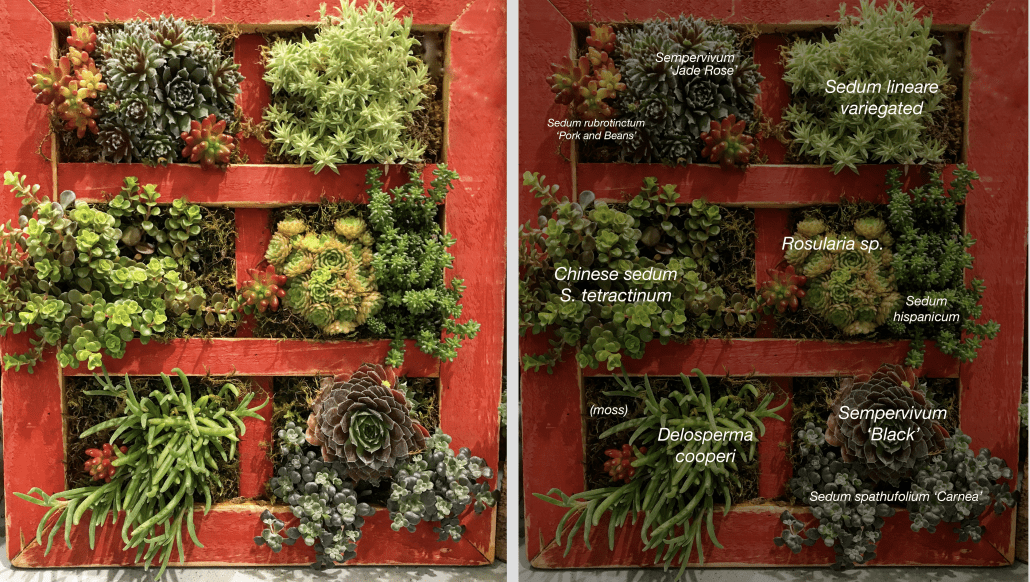
Below: In a cold-hardy wreath, Becky surrounded a large sempervivum rosette with smaller sedums, Delosperma cooperi (at lower left), and Sedum confusum (lower right).
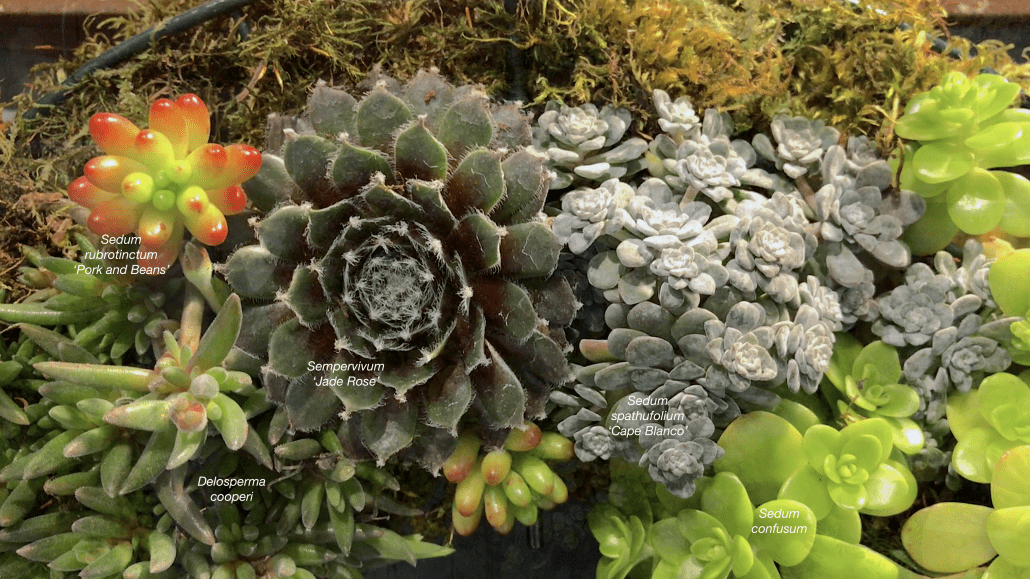
Below: I've ID'd the three sedums in this wreath at right. Becky gives her plants "hair cuts" to keep them compact.

"I like its dark edges," Becky says of Sempervivum 'Black', shown below in dramatic contrast with chartreuse Sedum 'Lemon Coral'. At lower right is a succulent native to Oregon: Sedum oreganum.
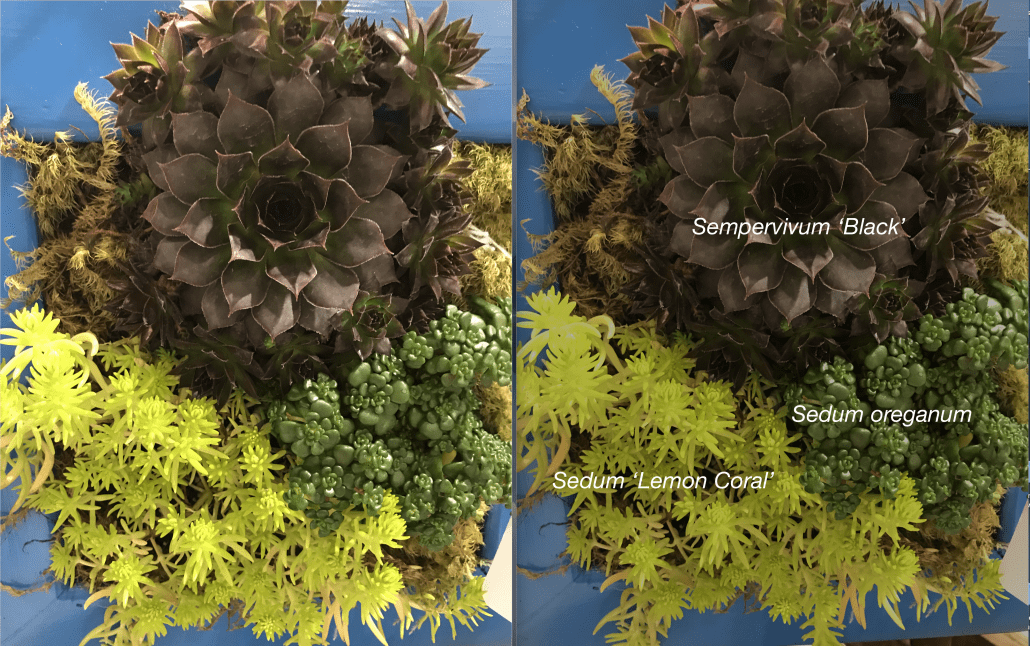
Becky and husband Paul create planters from repurposed wood and metal. The bronzy succulents below are Sedum confusum, which blushes red-orange in a sunny location. When less confused, it's bright apple green.
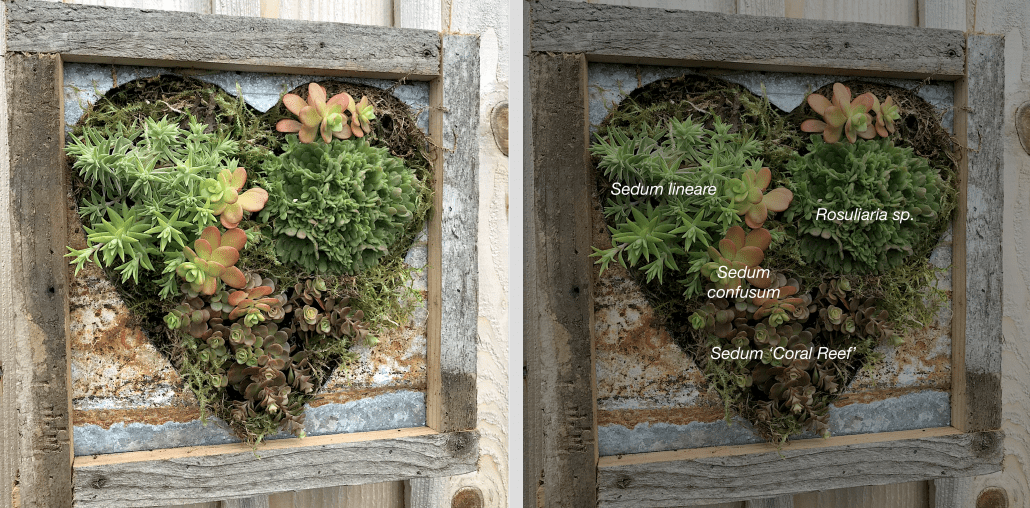
For wreaths and vertical gardens, Becky uses sphagnum moss to help hold plants in place. She emphasizes the importance of good drainage, which is true for all succulents, but especially those in rainy climates. Succulents from cold climates tend to have thin or small leaves and want a richer potting soil than thicker-leaved varieties from desert regions. Becky recommends Black Gold's organic mix.
In my YouTube video, "Sedum Chicks at the Northwest Flower & Garden Show," Becky explains how select and beautifully combine sedums, sempervivums and other cold-hardy succulents.
Related Info on this site
Cold Hardy Succulents: Details, Photos and Varieties
Cold-Hardy Succulents: Details, Photos & Varieties Looking for succulents that go below freezing? You’re in the right place! About cold-hardy succulents The common cold-hardy succulents shown here can handle northern winters, snow, rainstorms (if given excellent drainage) and summer dry spells. Sedum (stonecrop) Trailing varieties are lovely as ground covers and in rock gardens, terraces and hanging…
How to Grow Tender Succulents in Cold, Northerly Climates
With the exception of sempervivums, jovibarbas, many sedums and yuccas, and certain cacti and ice plants, the majority of succulents are frost-tender. Although they can tolerate temps down to freezing and in excess of 90 (if shaded), between 40 and 80 degrees is ideal. But you can grow any succulent, anywhere, if you understand its needs.
50 Cold-Hardy Succulents for Northern Climates
The popular and readily available varieties shown here can handle northern winters, snow, rainstorms (if given excellent drainage) and summer dry spells. There are two main genera: Sedum and Sempervivum. Lesser known are Rosularia, Delosperma, and Orostachys. Notably, certain species of Agave and cacti don’t freeze in all but the coldest climates.


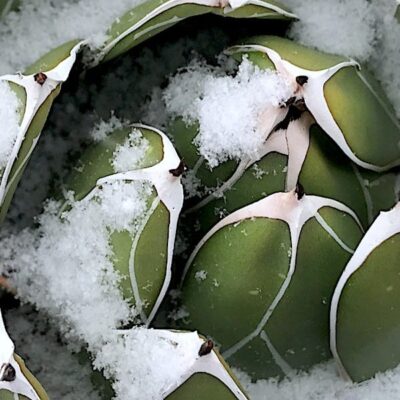
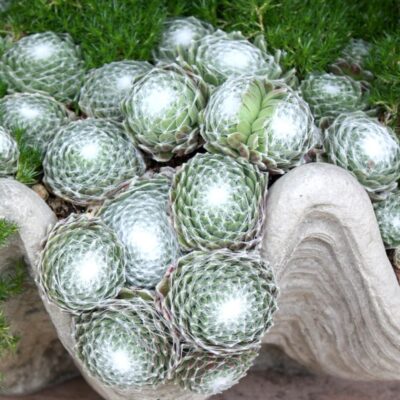
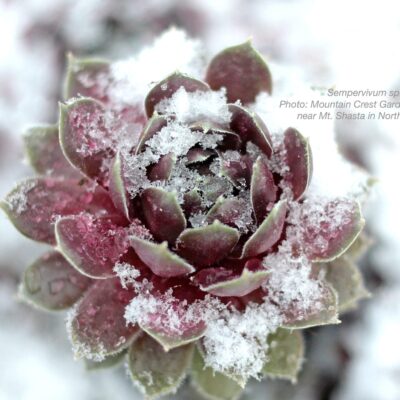
I love being creative with succulents. Do you like my most recent creation? My succulent Terrarium. I’m happy with it https://www.potmepretty.com.au/product/open-terrarium-large/
Debra,thank you ever so for you post.Much thanks again.
Debra, thanks so much for the post.Really thank you! Great.